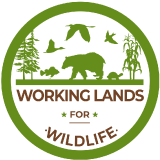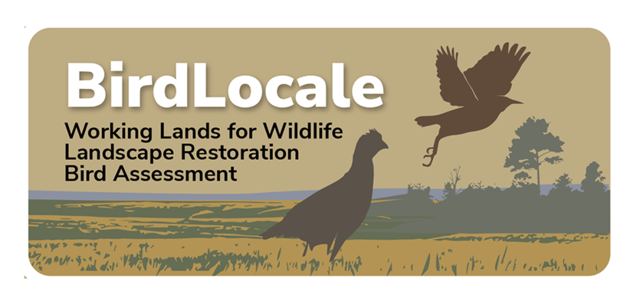-
Home
-
by
Tab Manager
—
published
May 17, 2019
—
last modified
Jul 28, 2025 05:38 PM
-
Bobscapes
-
by
Tab Manager
—
published
Feb 15, 2001
—
last modified
Feb 15, 2023 05:51 PM
-
Home
-
by
Tab Manager
—
published
Jan 31, 2001
—
last modified
Mar 14, 2023 09:37 PM
-
Data Request Instructions
-
by
Tab Manager
—
published
Nov 17, 2023
—
last modified
May 31, 2025 08:41 PM
-
Grasslands & Savannas
-
by
Tab Manager
—
published
Dec 06, 2024
—
last modified
Jul 15, 2025 04:58 PM
The grassland and savanna regions of the U.S. include the number one crop production states for corn, wheat, sorghum, soybeans, peanuts and cotton. Six of the top ten forest production states are in the East, and the Fescue Belt has the highest concentration of livestock producers and livestock in the country. Southeastern grasslands are the most diverse biologically in the U.S. but also the most imperiled with up to 90% in degraded condition or lost. Major threats include: habitat loss and fragmentation; climate change; alterations to natural land disturbance regimes; and invasive species.
Located in
Landscapes
-
Aquatics
-
by
Tab Manager
—
published
Dec 06, 2024
—
last modified
Jul 15, 2025 04:59 PM
Welcome to the Aquatic Connectivity Framework hub. This Framework is designed to protect and enhance the health of our nation's aquatic ecosystems.
Located in
Landscapes
-
Eastern Deciduous Forests
-
by
Tab Manager
—
published
Dec 06, 2024
—
last modified
Jul 15, 2025 05:00 PM
In the northeastern U.S., partners are helping reinvigorate private forestry as a viable—and sustainable—industry. After decades of harvesting valuable trees from forests and leaving the rest, eastern deciduous forests are a monoculture of same-age or same-species trees, lacking both market value and healthy wildlife populations. WLFW “hit the reset button” by working with forest owners to establish young forest stands and restore economic value and abundant wildlife such as white tailed deer, turkey, ruffed grouse, and rarer species like the golden-winged warbler.
Located in
Landscapes
-
Western Landscapes
-
by
Tab Manager
—
published
Dec 06, 2024
—
last modified
Jul 15, 2025 05:03 PM
The west includes a diversity of landscapes such as: Sagebrush Country; Great Plains Grasslands; and Central Grasslands and Savannas. Animal species include: Sage Grouse; Lesser Prairie-Chicken; and a variety of Migratory Big Game.
Located in
Landscapes
-
Home
-
by
Tab Manager
—
published
May 17, 2019
—
last modified
Jul 15, 2025 05:16 PM
-
Grasslands & Savannas
-
by
Tab Manager
—
published
Dec 06, 2024
—
last modified
Jul 15, 2025 05:41 PM
The grassland and savanna regions of the U.S. include the number one crop production states for corn, wheat, sorghum, soybeans, peanuts and cotton. Six of the top ten forest production states are in the East, and the Fescue Belt has the highest concentration of livestock producers and livestock in the country. Southeastern grasslands are the most diverse biologically in the U.S. but also the most imperiled with up to 90% in degraded condition or lost. Major threats include: habitat loss and fragmentation; climate change; alterations to natural land disturbance regimes; and invasive species.
Located in
Landscapes

